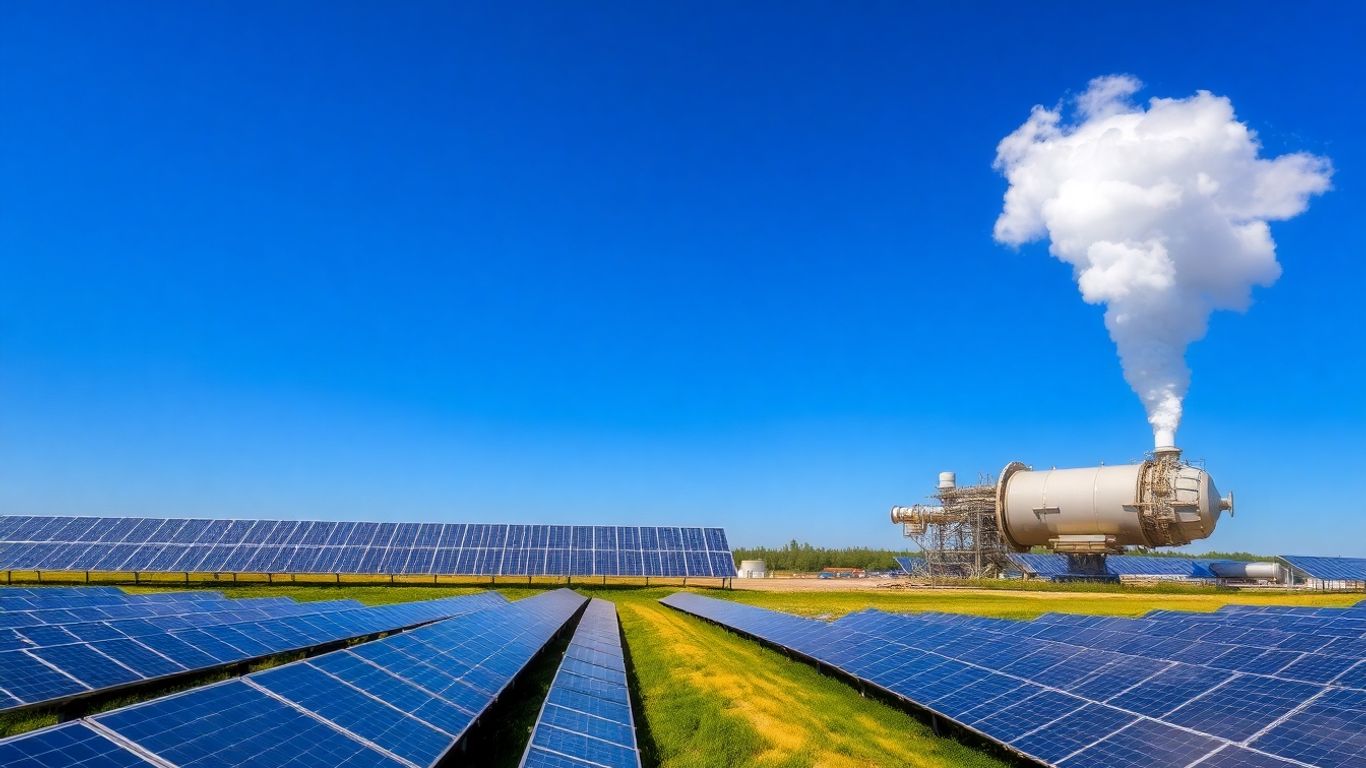Romania’s energy landscape is experiencing significant growth, marked by advancements in both renewable solar power and crucial natural gas infrastructure. Recent developments highlight a growing interest in the country’s renewable potential, particularly in solar energy, alongside strategic moves to enhance gas transmission capabilities.
Key Takeaways
- German developer ib vogt has secured a 70MW solar PV virtual power purchase agreement (vPPA) in northwestern Romania.
- The Romanian state-controlled company Transgaz is advancing plans to connect Black Sea offshore gas to Ukraine.
- The country’s solar market is evolving, with increasing corporate interest and successful government auctions.
Solar Power Expansion
German renewable energy developer ib vogt has announced the signing of a 70MW solar PV virtual power purchase agreement (vPPA) with an undisclosed US-based technology company. The project, located in northwestern Romania, will feature bifacial modules and single-axis trackers, with provisions for future energy storage integration. This development underscores the growing maturity of Romania’s renewable energy market and the increasing demand for corporate PPAs, which are seen as having significant growth potential.
Andreas Schell, CEO of ib vogt, commented on the agreement, stating, "This agreement shows the maturity of the Romanian renewables market and the vital role of clean energy in decarbonising power grids." The Romanian solar market has seen a surge in interest, evidenced by the second round of the country’s Contract for Difference (CfD) program, which awarded over 1.4GW of solar PV capacity.
Natural Gas Infrastructure Development
In parallel, Romania’s state-controlled company Transgaz is moving forward with plans to connect offshore gas from the Black Sea to the national grid and subsequently to Ukraine. The company has initiated the process for obtaining an environmental permit to build a connection between the pipeline that brings Black Sea offshore gas to the national grid and the BRUA pipeline. This connection will also link to pipelines T2 and T3, which facilitate gas transit from Greece and Bulgaria towards Ukraine and Moldova.
This strategic move aims to leverage Romania’s Black Sea gas resources, potentially supplying both domestic needs and export markets. While the primary focus is on the Romanian market, the infrastructure development also opens avenues for supplying neighboring countries, reinforcing regional energy security.
Market Evolution and Future Outlook
The Romanian energy sector is demonstrating a dynamic evolution, with both renewable energy deployment and traditional energy infrastructure upgrades taking center stage. The increasing number of solar projects and the strategic expansion of gas transmission networks signal a robust commitment to diversifying and strengthening the country’s energy supply. The government’s support through programs like the CfD auctions further bolsters investor confidence and accelerates the transition towards a more sustainable energy future.






